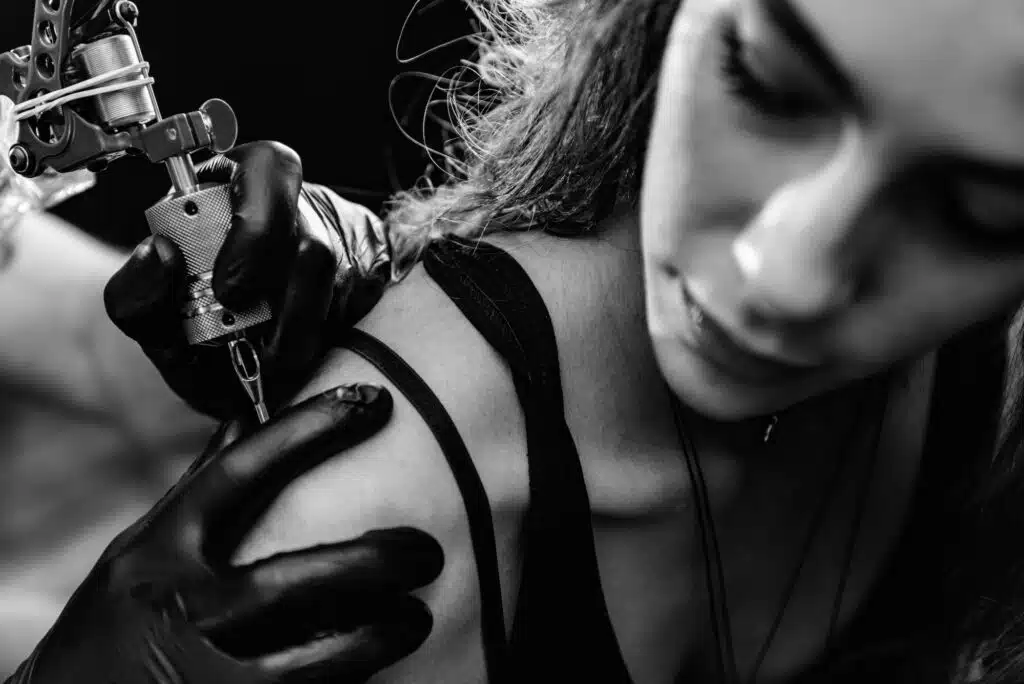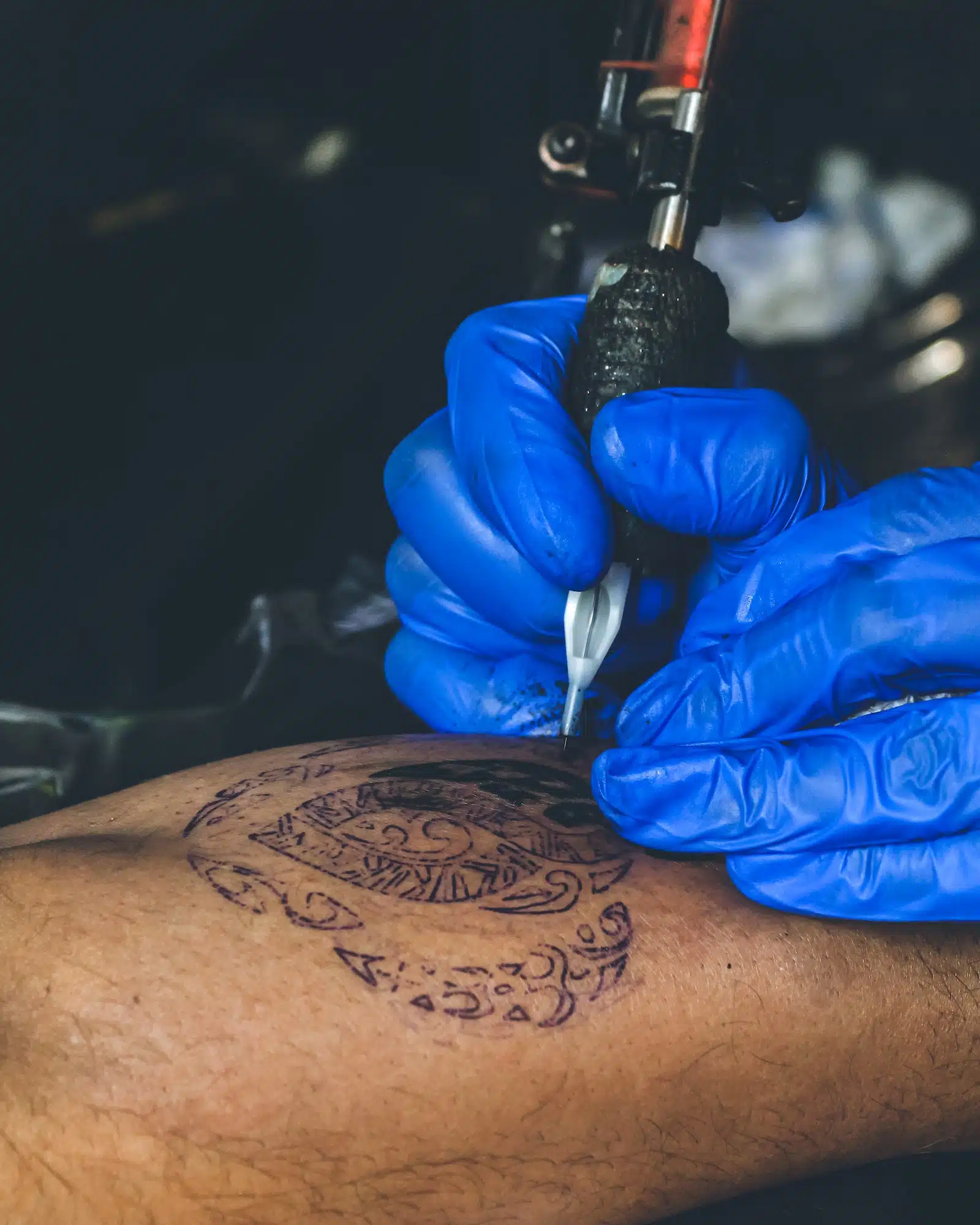
What Does A Swallow Tattoo Symbolise?
Swallow tattoos have long been popular among tattoo enthusiasts due to their rich backstory that has been used to represent various concepts and ideas for quite some time.
Here are a few of the most common interpretations of the swallow tattoo;
- Swallows are known for their faithful return to the same nest year after year, this makes them a great symbol to represent loyalty and stability.
- Swallows are birds that are often associated with travel and adventure and, as such, are seen as symbols of freedom and a desire for new experiences.
- Swallows have been considered good luck symbols in many cultures, and their image is often used to bring good fortune and positive energy.
- The image of two swallows facing each other is a classic design that symbolises love and partnership.
- Swallows are birds that are often associated with the sea and sailors. The image of a swallow with an anchor or ribbon is a popular design in nautical tattoo art.
History Of Swallows In Tattoo Culture & Its Significance Throughout The Ages

The origins of the swallow might have a tumultuous start, but over the years, it has become a symbol of positive symbolic significance.
As with all tattoos within Western culture, the swallow tattoo was birthed at sea. It is said that the swallow was used by sailors who staged a mutiny on a ship named The Swallow as a symbol of identifying their co-conspirators.
Ever since then, swallow tattoos have been used by sailors not as a symbol of mutiny but as a symbol of good luck and a safe return from a long journey at sea. This is because swallows were a common sight along the coastlines and ports of the world, and sailors would know that they had ended their journey safely once they saw these birds.
Sailors would often get a swallow tattoo after completing a long voyage, and as such, the tattoo gained another meaning. The tattoo became a symbol of their nautical experience and their connection to the sea.
Over time people on land saw these tattoos and got them, adding new meanings to the imagery of the swallow. The swallow tattoo came to represent a wider range of ideals and symbols, including freedom, stability, love, and good luck.
The tattoo gained so much popularity that it became a staple of traditional tattoo art in the early 20th century. The tattoo was popular with both men and women.
In recent years, the popularity of the swallow tattoo has continued to grow, and the bird’s image has been incorporated into traditional and contemporary styles. People from all over the world get swallow tattoos to symbolise love, stability or adventure, and many more get it as a nod to their ancestor’s nautical heritage or as an ode to the history of maritime culture.
Different Types Of Swallow Tattoos & Their Meanings
If you are looking for inspiration to get your swallow tattoo, here are a few different styles of this iconic tattoo and the meaning behind each design.
Traditional Swallow Tattoo
This is the form in which the swallow tattoo was originally created. It features a stylised swallow with outstretched wings and is often done in blue or black ink. The classic swallow tattoo design is associated with loyalty, stability, and good luck.
Nautical Swallow Tattoo
This design features the swallow with an anchor and ribbon, symbolising the connection between the bird and the sea. This design is often associated with sailors and maritime history and is a nod to the long tradition of sailors using the swallow tattoo as a talisman for a safe return from a journey at sea.
Tribal And Celtic Swallow Tattoo
This design incorporates tribal or Celtic elements like bold lines and intricate patterns into the design of the swallow. This design is often associated with strength, courage, and a connection to ancestral heritage.
Stylized Swallow Tattoo
This is an updated, modern, contemporary reimagining of the classical swallow tattoo. This design is often associated with freedom, creativity, and a love of the unconventional.
Pair Of Swallows Tattoo
This is a design often chosen by couples or those looking to celebrate a special bond with another person, as a pair of swallows facing each other symbolises love and partnership.
These are but a fraction of the various designs and motifs that a swallow tattoo can take. Remember, at the end of the day, the meaning of a tattoo is what you make of it, and it can vary depending on the individual and their personal beliefs and experiences.
FAQs
How do people choose the size and placement of their swallow tattoos?
When it comes to choosing the size and placement of your swallow tattoo, it is ultimately down to personal preference and individual style.
One factor that can influence the placement of the tattoo is deciding what size the swallow should be. Smaller swallow tattoos are often placed on the wrist or behind the ear, while larger designs are often placed on the arm, back or chest.
Are there any risks associated with getting a swallow tattoo?
Yes, there are multiple risks associated with getting any type of tattoo.
The process of getting a tattoo involves using a needle to inject ink into the skin. As with any break in the skin, there is a risk of infection. This risk can be reduced by making sure that the tattoo artist uses sterile equipment.
Some people may be allergic to the ink used to create tattoos; this allergic reaction often results in redness, itching and swelling. Be sure to go to a dermatologist to see if you might be allergic to tattoo ink before making an appointment.
Tattoos can sometimes result in scarring, particularly if the skin is damaged during the tattoo process.
Are there any special designs associated with swallow tattoos?
There aren’t any particular special designs that are associated with swallow tattoos, as the design of the tattoo often depends on the individual getting the tattoo.
There are some common swallow tattoo motifs that are used:
- Most swallow tattoo designs are of a swallow in flight with wings outstretched.
- Two swallows facing each other is also a common design motif as it symbolises love and partnership.




